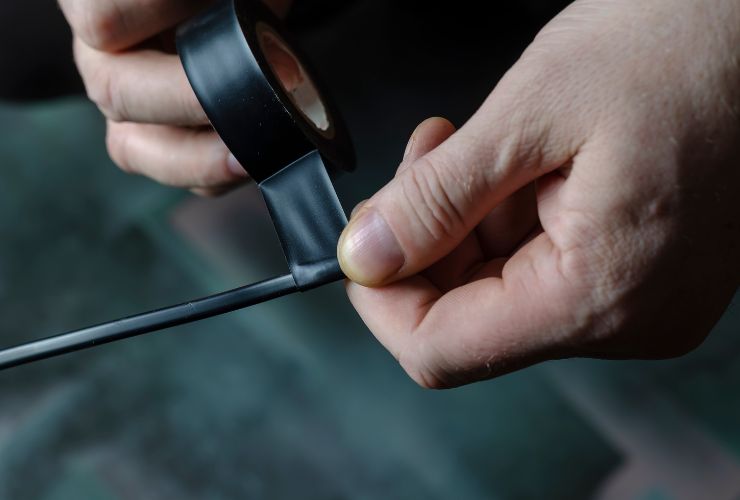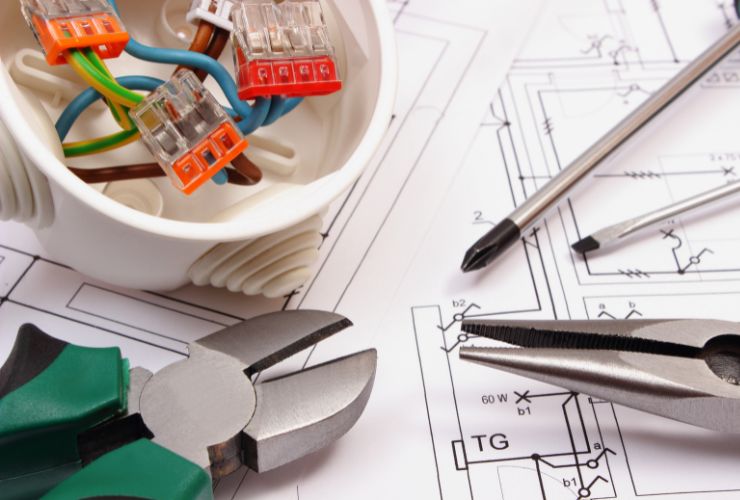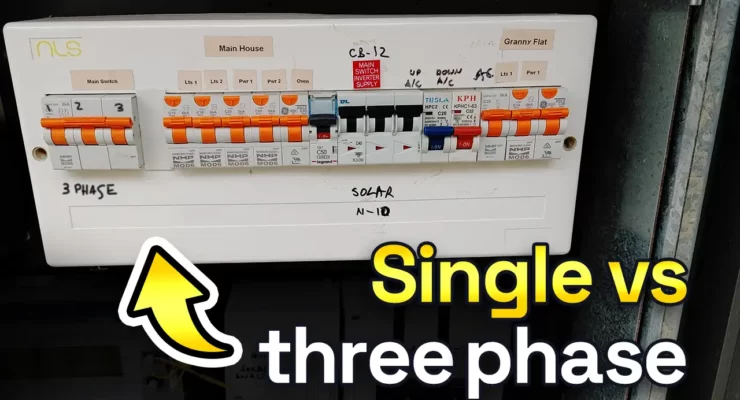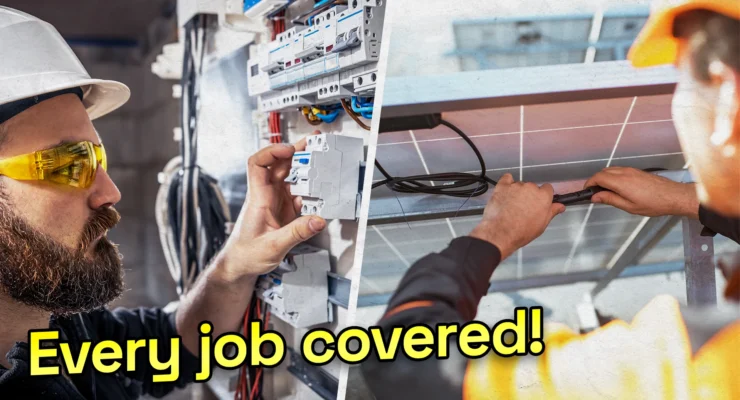Fast read
When installing solar or batteries, knowing whether your home has single-phase or three-phase power is important, as it affects the type of inverter you need. Single-phase power involves a single wire feeding your property, suitable for less electricity demand.
In contrast, three-phase power, common in modern buildings, supports higher energy use with three wires. To identify your power type, check your meter box for the number of main switches or poles (one for single-phase, three for three-phase).
The type of power phase you have can also be determined by a solar installer during a home inspection. This information helps to optimise your solar system installation, ensuring efficient energy use.
What is the difference between single-phase vs. three-phase power?
If you are considering renewable energy technology like solar or batteries, one question your installer may ask you is whether your home is single-phase or three-phase. Most residential homes in Australia have a single-phase supply connection, which uses one live wire and one neutral wire for standard household electricity needs. In contrast, a three-phase connection uses three live wires and is typically found in larger homes or commercial buildings with higher electricity demands.
The type of electrical connection you have can influence your solar installation options and system performance, as three-phase power can support larger electrical loads and offer a more balanced load distribution. Therefore, knowing your home’s electrical phase is essential for determining the most suitable solar or battery system for your needs.
What are they?
When we discuss phases and power, we refer to the distribution of load. This means that single-phase power feeds a single wire into your property, while three-phase means three wires are fed into your property.
In the past, most homes were built with single-phase power, this is because we used only to run our fridge, lights and TV on electricity. However, with the increase in electrification globally, almost everything in our homes uses electricity.
We are also seeing many homes upgrading to three-phase power. Three-phase power means we can now support more energy demand in your home.

How does this affect solar and batteries?
Just like considering your roof angle and shading, what phase type your home has is an important aspect of your solar system installation. The main reason is that it impacts the type of inverter you can have. This is because there are both single-phase and three-phase inverters.
When your home has three-phase power, the other option is installing three single-phase inverters. However, this is usually more expensive than just installing a single three-phase inverter. Nevertheless, a quality solar installer can analyse your home and give you the best recommendation.
So, how do I know if I have a single-phase or three-phase?
The simplest way to determine your power phase is by simply heading out to your meter box and opening it up. If you can see three main switches, you have three-phase power; if there is only one one, you have single-phase power. You can find these switches, often called ‘poles’, in your meter box; they are in the distribution board or sub-boards for larger properties or units.
A second way to determine is to look at your switchboard. There should be a large service fuse on your switchboard, usually in the top corner. If there is one switch, you have single-phase; if there are three, you have three-phase.
Other ways to determine include looking at your electricity bill. This will show readings for each power phase, or contact your electricity provider.
If you are interested in getting solar, you can also determine what power phase you have by having your home inspected by a quality solar installer who can easily identify it.
 A proper site inspection and examination of your meter board and local connection can establish what electricity supply your home enjoys
A proper site inspection and examination of your meter board and local connection can establish what electricity supply your home enjoys
Two-phase power?
Typically, an electrician opts to install two-phase power in a home when they identify that the energy requirements surpass the capacity of a single-phase system. This could be because of a combination of factors such as the size of the home, the number of high-power appliances, or specific energy-intensive equipment.
Identifying whether your home has two-phase power can be done using the methods previously mentioned, either by checking your electrical meter or consulting your electrical panel. Once you’ve determined your home’s power phase, you’ll have valuable information to share with a solar professional.
With this information in hand, a solar professional can better understand your home’s electrical setup and energy needs. This allows them to recommend and provide you with a solar system that is not only compatible with your home’s power phase but also tailored to meet your specific energy requirements. By collaborating with a knowledgeable solar professional, you can ensure that you choose the most suitable and efficient solar solution for your home.
In Summary
Understanding whether your home has single-phase, two-phase, or three-phase power is crucial when considering solar or battery storage installations. Single-phase power is common in most residential homes and uses one live wire and one neutral wire, suitable for lower electricity demands. Three-phase power, found in modern buildings and larger homes, uses three live wires and supports higher energy usage. Two-phase power is less common and used when energy requirements exceed single-phase capacity.
To identify your home’s power phase, you can check your meter box for the number of main switches or poles— one for single-phase, two for two-phase, and three for three-phase. Alternatively, you can consult your electrical panel or switchboard. Knowing your power phase is essential as it influences the type of inverter needed for your solar system.



